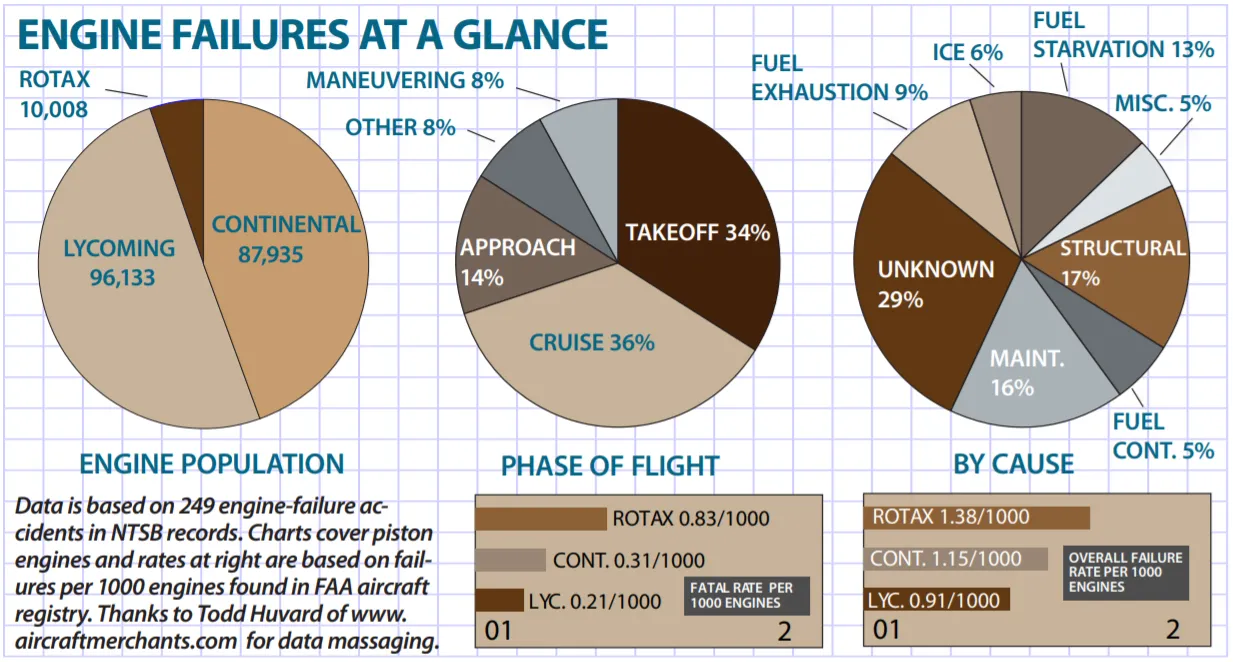Airborne_Again wrote:
Of all the places and times you can get an engine failure, why focus on the traffic circuit?
Because it’s one of the most likely times for it to happen. Particularly in my type which has a reputation for it – probably due to carb icing.
kwlf wrote:
Because it’s one of the most likely times for it to happen.
I really doubt that. Do you have statistics?
One interesting item is the author claims the 1000’ IFR/500’ VFR airliner stable approach ‘Gate’ was no longer used, this was news to me?
USA ATPL standard of one dot on the ILS means an airliner main landing gear is meeting the criteria of straddling the centre line at minima. Airliner jet assessments want to see that the approach has been stable, and that transition from minima to round out/flare/landing should require very little control input.
In the USA I don’t believe they encourage a decelerating ILS unless the approach is using automatics. In other words, the FAF Gate is a big deal. In Europe some jet assessments might want to see a manual decelerating ILS, which in effect means you are crossing the FAF not configured fully and above your typical Vref speed tolerances. It is worth mentioning Part 121 safety standards and outcomes remain the best in the world. AAIB on I-NEOT is a good case study of a European crew getting woefully behind on a decelerating ILS at Bristol and nearly causing a major accident.
Obviously, none of this applies to a Pitts Special on a curving approach into White Waltham.
RobertL18C wrote:
One interesting item is the author claims the 1000’ IFR/500’ VFR airliner stable approach ‘Gate’ was no longer used, this was news to me?
News to me as well. I have some loose contact with folks who do flight data monitoring and have not heard anything like this.
I really doubt that. Do you have statistics?

I don’t know what the ‘average’ flight is, but say for the sake of argument you fly for an hour and spend 3 minutes on take off and three minutes on approach; your take off and landing count for 1/10 the flight time but about half the engine failures. Added to which you have less time to react in a failure at low level.
Even if my estimate is way off, it’s fair to guess that the risk is compressed into these relatively brief periods.
kwlf wrote:
I don’t know what the ‘average’ flight is, but say for the sake of argument you fly for an hour and spend 3 minutes on take off and three minutes on approach; your take off and landing count for 1/10 the flight time but about half the engine failures. Added to which you have less time to react in a failure at low level.
I don’t doubt the figures for takeoff, given that the engine is giving maximum performance at that time. But that’s irrelevant for this discussion as planning the traffic circuit so that you can always make a deadstick landing in case of engine failure won’t help a bit if you get an EFATO.
Figures for approach are about 50% of those for take off, which is still substantial. At low power there’s a risk of carb icing. If sideslipping you might draw air from a tank. If you run a tank dry, at altitude you should have time to switch tanks and it will be a non-event, but at low level there’s less time. Doesn’t seem surprising to me that landing is a risky time.
Personally I have started to land long. Went through a period of sideslipping in so that I was always above the glideslope.
Airborne_Again wrote:
But that’s irrelevant for this discussion as planning the traffic circuit so that you can always make a deadstick landing in case of engine failure won’t help a bit if you get an EFATO.
Based on my experience a “true” EFATO is close to zero probability. I have had a few of them, and it has always been the engine not running correct, but still running and producing enough power to fly. We train EFATO regularly though. It’s good training, and that correct reflex can be useful at some point regardless, even on final, as it is not always done at idle all the way (it’s usually done way too fast, but that’s another thing)
I don’t know if it’s just me. I do see a clear tendency for focus on irrelevant things to make GA “safer”. Especially in the last 10 years. Lots of theoretical/academic stuff, typically manifested in some kind of procedure, that somehow shall make up for unsatisfactory currency, piloting skills and back bone reflexes. IMO there is no substitute for:
Those 3 things go hand in hand and without the first, the last two will corrode for sure.
LeSving wrote:
IMO there is no substitute for:Currency
Piloting skills
(correct) back bone reflexes
Those 3 things go hand in hand and without the first, the last two will corrode for sure.
Indeed. Considering that my club only during the last 10 years had two landing accidents caused by too much energy on short final and only one engine failure (which happened to be an EFATO – no damage to the aircraft fortunately) I feel secure in my opinion is that the traffic circuit should be arranged so as to maximise the likelihood of being on speed and height over the threshold. Everything else (including engine failure considerations) is secondary.
LeSving wrote:
Currency
Piloting skills
(correct) back bone reflexes
All of these can only be gained through repetition and flying a lot (the third one has to do with natural ability perhaps).
So the best way to increase GA safety is low hourly cost through cheap avgas and eventually battery-powered aircraft and the 20 hour workweek 